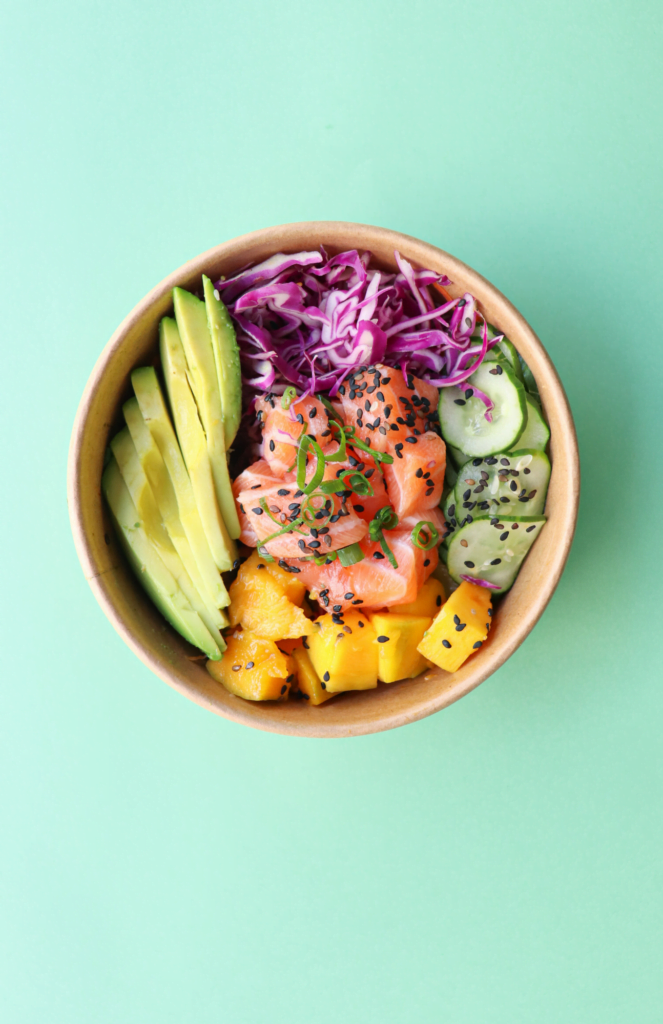Discover the Top 20 Best Foods for Sciatica Pain
Last Updated on May 1, 2024 by Dr. Tiffany Egan
Oftentimes it’s difficult to determine what to eat and what NOT to eat, especially when you have a chronic condition such as sciatica.
While there are various treatment options available for sciatica, including medication and physical therapy, many people overlook the role that diet plays in managing the condition.
By incorporating these top 20 best foods for sciatica, you can potentially alleviate the inflammation associated with sciatic nerve pain and promote healing once and for all!
Table of Contents
The role of diet in managing sciatica pain
A healthy diet is essential for overall well-being, but it can also play a crucial role in managing sciatica pain. Certain foods have anti-inflammatory properties that can help reduce inflammation, stabilize blood sugar levels and relieve the pressure on the sciatic nerve. Additionally, the best foods for sciatica are rich in vitamins and minerals that can support nerve health and aid in the healing process.

The top 20 best foods for sciatica relief
- ^Turmeric: This spice contains a compound called curcumin, which has powerful anti-inflammatory properties. Adding turmeric to your meals or taking a curcumin supplement can help reduce sciatica pain.
- ^Ginger: Ginger is another natural anti-inflammatory that can provide relief from sciatica pain. You can incorporate ginger into your diet by adding it to smoothies, teas, or stir-fries.
- Pineapple: Pineapple contains an enzyme called bromelain, which has been shown to reduce inflammation. Enjoying fresh pineapple or adding it to your favorite fruit salad can help alleviate sciatica pain.
- ^Cherries: Cherries are rich in antioxidants and have anti-inflammatory properties. Enjoy a handful of fresh cherries or drink cherry juice to help reduce sciatic pain.
- Spinach: Spinach is packed with nutrients, including vitamins A and C, which are important for nerve health. Add spinach to your salads, smoothies, or omelets for a nutritious boost.
- Salmon: Salmon is an excellent source of omega-3 fatty acids, which have been shown to reduce inflammation. Enjoy grilled or baked salmon to help alleviate sciatica pain.
- Walnuts: Walnuts are another great source of omega-3 fatty acids. Snack on a handful of walnuts or sprinkle them on your salads or oatmeal for added health benefits.
- ^Blueberries: Blueberries are rich in antioxidants, which can help reduce inflammation. Add them to your breakfast cereal or enjoy them as a healthy snack.
- Avocado: Avocado is a nutrient-dense fruit that is rich in healthy fats and potassium. Incorporate avocado into your diet by making guacamole or adding slices to sandwiches and salads.
- Green tea: Green tea is packed with antioxidants and has anti-inflammatory properties. Enjoy a cup of green tea in the morning or throughout the day to help alleviate sciatica pain.
- ^Broccoli: Broccoli is a cruciferous vegetable that is high in vitamins and minerals. Steam or roast broccoli as a side dish or add it to stir-fries and soups for added health benefits.
- Oranges: Oranges are rich in vitamin C, which is essential for nerve health. Enjoy fresh oranges or drink freshly squeezed orange juice to support your sciatica relief.
- Kale: Kale is a nutrient powerhouse that is rich in vitamins A, C, and K. Add kale to your salads, smoothies, or sauté it as a side dish for a nutritious boost.
- Quinoa: Quinoa is a gluten-free grain that is high in protein and fiber. Use quinoa as a base for salads or as a substitute for rice or pasta in your favorite recipes.
- Sweet potatoes: Sweet potatoes are packed with vitamins and minerals, including potassium and vitamin B6. Bake or roast sweet potatoes as a nutritious side dish or make sweet potato fries for a healthier alternative.
- Almonds: Almonds are a great source of vitamin E, which is important for nerve health. Snack on a handful of almonds or add them to your favorite recipes for added health benefits.
- Beets: Beets are rich in antioxidants and have anti-inflammatory properties. Enjoy roasted beets as a side dish or add them to salads for a colorful and nutritious meal.
- Lentils: Lentils are a good source of protein and fiber, which can help reduce inflammation and support overall nerve health. Use lentils in soups, stews, or salads for added health benefits.
- Dark chocolate: Dark chocolate contains antioxidants and has anti-inflammatory properties. Enjoy a small piece of dark chocolate as a treat to help alleviate sciatica pain.
- ^^^Water: Staying hydrated is crucial for overall health and can help reduce inflammation. Drink an adequate amount of water throughout the day to support your sciatica relief.
^ = Highly Recommended Foods – Especially if your are trying to keep your histamine levels low!
You may have noticed that the Top 20 best foods for sciatica are WHOLE foods and unprocessed. When in doubt of certain foods, stay in the perimeter of the grocery store and avoid foods with labels.
Try to listen to your body and keep a food diary to record how you feel after consuming different types of foods. Eating whole grains, fatty fish and leafy greens may provide pain relief for some people while others may feel they are the wrong foods.
Incorporating anti-inflammatory foods into your diet
Inflammation plays a MAJOR and significant role in sciatica pain, so incorporating an anti-inflammatory diet can help alleviate the discomfort. Healthy foods like turmeric, ginger, pineapple, cherries, and blueberries have natural anti-inflammatory properties that can reduce inflammation and relieve sciatica pain.
Good news, by adding these best foods for sciatica to your meals and snacks, you can support your body’s natural healing process and promote sciatica relief.

Foods rich in vitamins and minerals for nerve health
Proper nerve health is crucial for managing sciatica pain, and the best foods for sciatica can provide the vitamins and minerals needed to support nerve function. Spinach, broccoli, kale, oranges, and almonds are all rich in vitamins and minerals that are essential for nerve health.
Incorporating these nutrient-dense foods into your diet is the best way to support the health of your nerves and potentially reduce sciatica pain.
Adding omega-3 fatty acids to reduce inflammation
Omega-3 fatty acids have been shown to reduce inflammation and can be beneficial for managing sciatica pain. Foods like salmon, walnuts, and chia seeds are excellent sources of omega-3 fatty acids.
I find that the easiest way to ensure I’m getting enough omega-3’s is by taking a supplement. Either gummy, capsule or liquid form will be highly beneficial to add in daily!
By including these best foods for sciatica in your diet, you can help decrease an inflammatory response and potentially alleviate sciatica pain.
Including foods that promote blood flow and circulation
Promoting blood flow and circulation is important for managing sciatica pain, as it can help reduce inflammation and support healing. Foods like ginger, garlic, cayenne pepper, and turmeric have properties that can improve blood flow and circulation.
By incorporating these best foods for sciatica on a regular basis, you can optimize your body’s natural healing process and potentially reduce sciatica pain.
The importance of hydration for sciatica relief
Staying hydrated is essential for overall health, but it also plays a crucial role in managing sciatica symptoms. Drinking plenty of water throughout the day can help reduce inflammation and promote healing.
Additionally, staying hydrated can improve the flexibility of your muscles and joints, potentially alleviating sciatica pain.
Foods to stay away from
Unlike the previously mentioned best foods for sciatica, these OTHER types of foods INCREASE chronic inflammation. They can also potentially cause unwanted weight gain which can worsen sciatica symptoms.
In a nut shell, these are the foods to avoid if you have sciatica:
- Most fast food
- Fried foods
- Sugary foods
- Overly processed foods

Combining a healthy diet with other natural remedies for sciatica
While a healthy, balanced diet can play a significant role in managing sciatica pain, it is essential to combine the best foods for sciatica with other natural remedies or alternative therapies for optimal results.
Regular exercise, stretching, hot and cold therapy, and proper posture are all important factors in managing sciatica pain. By incorporating these natural remedies into your routine and maintaining a healthy diet, you can keep health issues at bay and kick start the healing process.
Please don’t hesitate to reach out to your health care provider for more guidance on a personalized diet. A healthcare provider may also be able to check blood levels to make sure you aren’t deficient in vitamin d and other important vitamins for sciatica sufferers.
Magnesium for sciatica has been shown to greatly decrease symptoms and pain!
Conclusion: Embracing a delicious and nutritious approach to sciatica relief
Managing sciatica pain doesn’t have to feel overwhelming. Incorporate the top 20 best foods for sciatica relief, focus on anti-inflammatory food options, and ensure you’re getting the necessary vitamins and minerals for nerve health.
Combine this with other natural remedies and a consistent stretching and exercise routine for optimal results. Remember, taking care of your body from the inside out is the key to finding long-term relief from sciatica pain!







